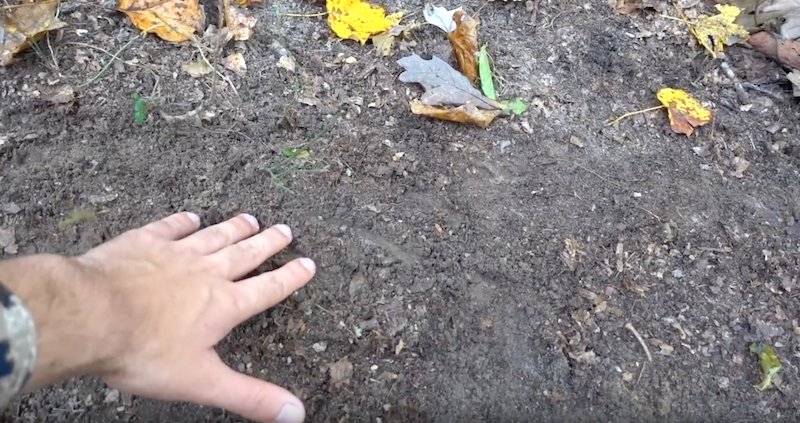To harvest a deer with a bow, you need to make three critical decisions: choose the right location to find deer, stay undetected, and make a lethal shot.
You’ll find the best spot for deer wherever you find deer sign. These clues help us determine where deer spend their time. During preseason scouting, you not only get the lay of the land, you get an early indication of deer habits by locating their sign. During the season, you’ll want to look for fresh sign as the first step to a successful hunt.
Fresh sign is important because deer patterns shift with changing food sources and hunting pressure. You don’t want to get caught hunting where deer were last month. Ideally, you’ll hunt the area deer are currently occupying.
Interpreting fresh deer sign isn’t an exact science. But, with a little deduction, you can make an educated guess on the relative freshness of sign.
Deer dropping look like black oval pellets. They sometimes clump together when deer have been eating a lot of leafy greens. If droppings look moist, that’s a good sign they’re fresh and deer have recently been in the area.

Deer tracks are easier to track after a heavy rain when the ground turns to mud. Photo credit: John Hafner
Deer tracks provide valuable information, such as which trails deer use and what direction they travel. This information is helpful, but only if those tracks were made recently. Interpreting deer tracks is an art that takes experience and practice.
One of the best clues to determine if a track is fresh is to look for clearly defined edges. Wind, rain and time all wash away tracks, and they’ll become less visible the more time passes. That’s why looking for tracks after a heavy rain or fresh snow is a sure way to know that any tracks you see are likely fresh ones.
To get an idea what fresh track looks like, follow any deer you see while hunting and scouting. As you examine more tracks, you’ll begin developing a feel for a fresh track and even be able to distinguish bucks from does.
In early fall, bucks strengthen their necks and mark their territory by rubbing their antlers on trees. This leaves exposed wood and scarred trees that are easy to spot. New rubs will cause a tree to have wet sap, a fresh smell, and bright-colored wood showing. An old rub has already healed over, and the wood will look dull by comparison. Learn more about rubs here.

Deer will paw at the ground or lick an overhanging branch to leave their scent. Photo Credit: ATA
A scrape is a bare patch of ground shaped like an oval or triangle with an overhanging branch. To make scrapes, deer paw away leaves and debris to expose the soil, which acts as a host for scent they leave behind. They mouth and rub their foreheads on the overhanging branch, which also holds scent. It’s all part of a communication ritual they perform during the weeks leading up to the rut.
Fresh scrapes have moist soil, a strong scent, and are void of any leaves or debris. Learn more about scrapes here.
This fall, plan to hunt where the deer are– not where they were. If you scout and hunt the fresh sign, you’ll always have plenty of deer sightings that hopefully lead to shot opportunities.